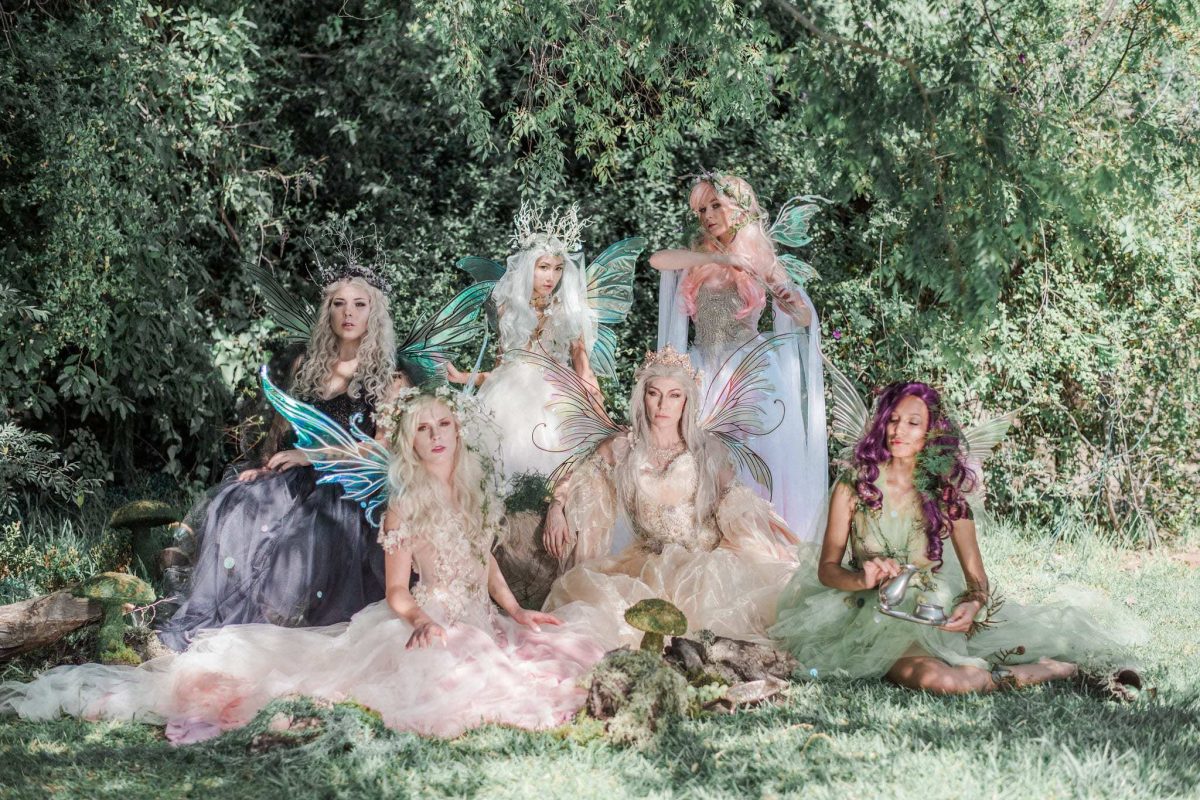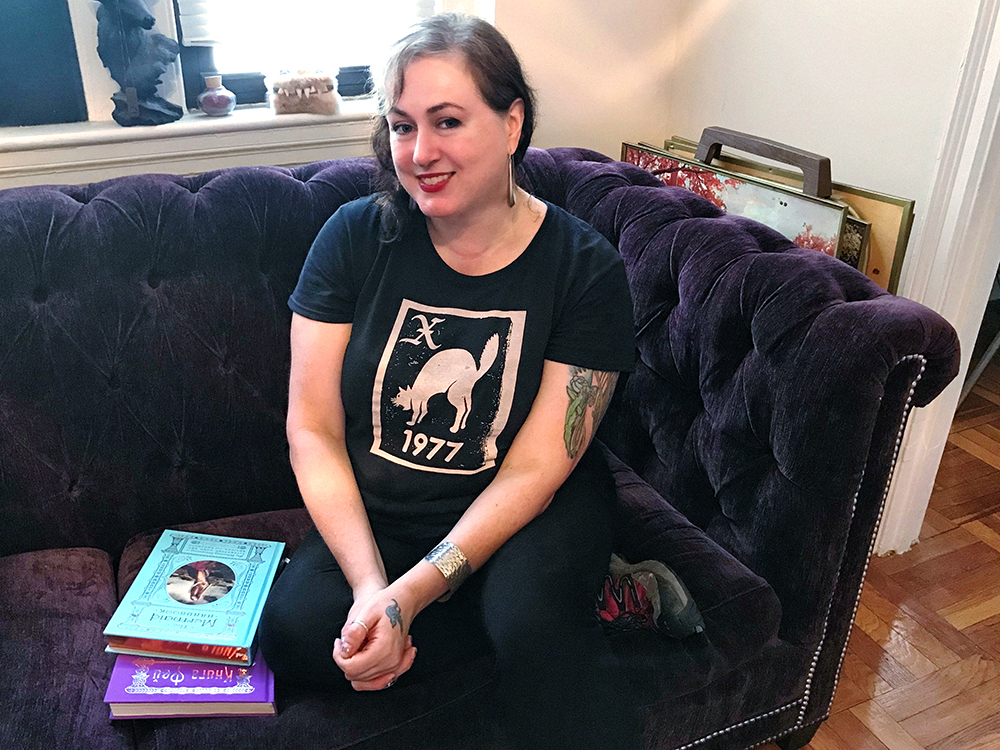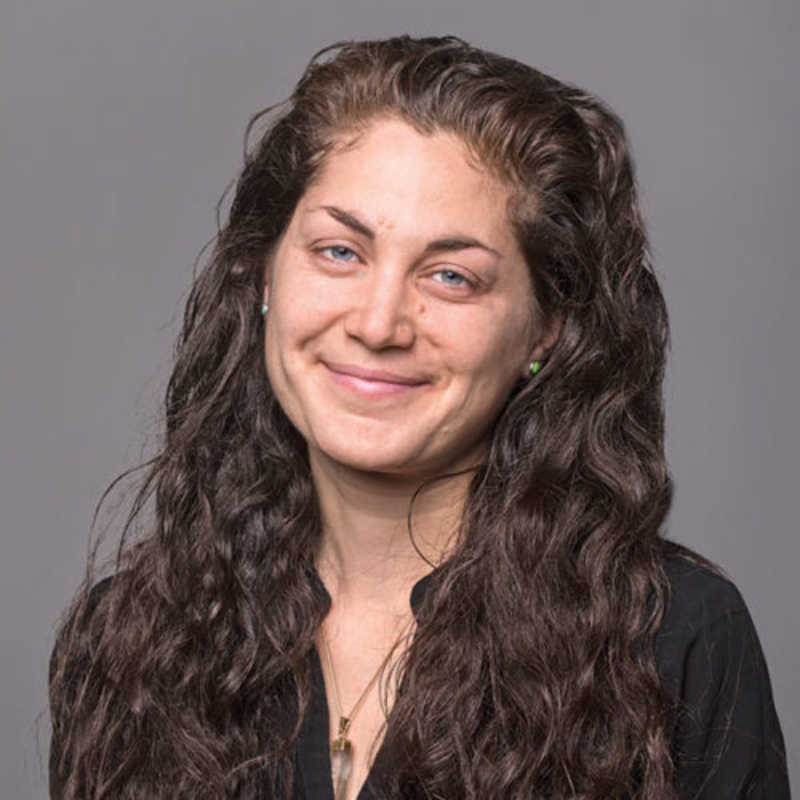
It comes as no surprise when Carolyn Turgeon, editor-in-chief of Faerie Magazine, says she’s always loved fairy tales.
She sits in her living room on a purple velvet couch—the same place where she often writes her novels and magazine stories. Flecks of tinsel-like hair extensions make her dark locks sparkle when she turns her head.
“And I loved Disney movies,” she goes on. “Especially as a teenager. I loved that glittery, over-the-top gorgeousness combined with darkness in fairy tales.”
While you might picture Turgeon living in a storybook cottage in the woods, this author of five novels, as well as The Faerie Handbook and The Mermaid Handbook, has called Baltimore home since 2015 and lives in an apartment in the city. Her stories of fairy folk, mermaids, witches, and unicorns come from a deep well of imagination, as well as inspiration found in books, films, and the interesting people she meets through her work.
Her love for reading started at a young age, and it was a book, in fact, that provided her with her first vision of becoming a writer.
“We moved around a lot, growing up, and I was kind of a dreamy, shy kid,” she says. “I was definitely one of those kids who books saved. I had a huge response to them and to things that were beautiful—being able to step into those worlds.”
As a child, she once asked her mother to pick up a Betsy book from the library, referring to the popular Carolyn Haywood series. But instead, her mom brought her back a Betsy-Tacy book, set during the turn of the century, by Maud Hart Lovelace. It was a happy accident. “I fell in love with these books—the long dresses, this girl constantly scribbling in her notebook. I thought she was the coolest thing ever.”

Turgeon actually penned her first novel when she was 8. (“It’s not very good,” she admits.)
Her first published novel was Rain Village—which she started writing in college and then finished about a decade later. Set in the early 1900s, it tells the story of a small girl who doesn’t seem to fit in because of her size—but her world opens up exponentially when a librarian coaxes her to read, starting her on her path of who she is and who she will become.
Turgeon went on to write more novels that contain magical elements but are simultaneously rooted in reality. She often pulls from fairy tales, as she sees them as “primal stories that are in your blood and bones because you know them so well,” she says. “They’re linked to childhood and can take on a mythical sort of thing. In some ways, they’re so loose, you can interpret them in different ways.”
In her retellings, written for adults, she often focuses on characters whose stories weren’t heard in the original tales.
“The perspectives that were left out or overlooked makes you wonder why they were overlooked. Those characters can be really powerful because of that.”
For instance, what happens to all these young princesses as they grow up? To put it another way: why are old women always evil in fairy tales? In her novel The Fairest of Them All, Turgeon fleshes out Rapunzel’s story and imagines her growing up to become Snow White’s evil stepmother.
Her book Mermaid focuses on an alternate character, too: the princess who ultimately marries the prince in Hans Christian Andersen’s story (while the little mermaid ultimately turns to sea foam). Turgeon noticed upon reading the original version that we really know very little about this woman—which was rather intriguing to her.
After selling Mermaid, she launched a blog called “I Am a Mermaid” to serve as a depository for all things mermaid related, as she noticed these magical sea creatures appearing in her life more and more—in pop culture, in stories, even in the Starbucks logo. After the website was up and running and Mermaid was released, she was blown away by all the feedback she started receiving from people with mermaid stories of their own.
“People respond to mermaids in such a big way,” she says.
She dove in head first—attending Mer-Con in Las Vegas, going to mermaid camp at Weeki Wachee Springs in Florida (twice), and being the featured mermaid author at the Maryland Faerie Festival. It was at that festival that she met Kim Cross, an artist and Baltimore native who founded Faerie Magazine in 2005 and remains its publisher.
Soon after, Turgeon began working with Cross to compile a special mermaid issue of the magazine, then stayed on to become the magazine’s editor-in-chief, eventually relocating to Baltimore because of her work with Faerie Magazine (which will change names and become Enchanted Living beginning with the winter 2018 issue).
This past summer also brought the release of Turgeon’s Mermaid Handbook, a gorgeous tome that details all things mermaid, which coincided with a second mermaid-themed edition of Faerie Magazine.
“What fascinated me most about mermaids is how people incorporate them into everyday life in different, creative ways,” Turgeon says. “There are real people who just go and get tails, fitted to their bodies, and go swimming in rivers. It’s like, when they put on these tails, they become a super-heroic version of themselves.”
Of course, the magic doesn’t stop with mermaids, but the idea of transcending ordinary life is one that has always intrigued Turgeon.
A sixth novel is in the works, one that delves into the love story of Dante and Beatrice, and she’s also compiling a third handbook, The Unicorn Handbook, slated for release in 2020 (one can only imagine what sorts of magical adventures that will entail).
Last summer, she went to a witch camp in New York, mostly for fun, but partly in preparation for the Practical Magic-themed Faerie Magazine issue that hit stands last fall. Veronica Varlow runs the gatherings for women at her home, which she’s named Curiosa Magic House.
“It’s like her dream summer camp,” Turgeon says. “We went to a swimming hole, we roasted vegan marshmallows, we made flower crowns and took an archery class. It was crafty and girly and fun, but also we’d weave in spells—things to make us feel empowered—into everything we did, and we all really bonded with each other.”
The idea was to add a bit of magic to your life—an idea that Turgeon believes whole-heartedly, not just when writing stories but when looking at the world around her, seeing the magic in the everyday, and living out her own story.
